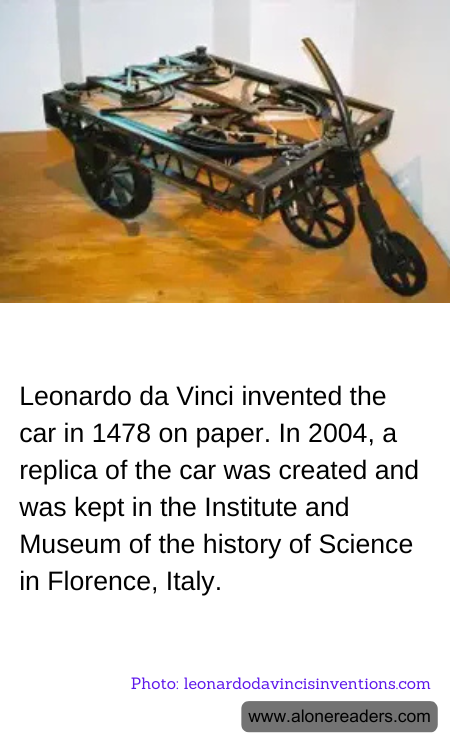
Leonardo da Vinci, a polymath of the Renaissance era, was not only a master of art but also an accomplished inventor who sketched the concept of the automobile in 1478. His visionary design, found in his Codex Atlanticus, a twelve-volume set of drawings and writings, showcases his deep interest in mechanics and engineering. Although da Vinci’s automobile was never built during his lifetime, it represents one of the earliest known plans for a self-propelled vehicle.
In 2004, this conceptual vehicle leapt from da Vinci’s sketches into reality when a team of researchers and scientists, intrigued by his innovative designs, constructed a replica. This project was spearheaded by Italy's Institute and Museum of the History of Science in Florence, now known as the Museo Galileo. The team meticulously followed the dimensions and materials indicated by da Vinci to create a model that mirrored the original design as closely as possible.
The replica, primarily made from wood and fitted with a series of gears and springs designed to propel it, showcased da Vinci's genius in envisioning a vehicle that could move without being pushed or pulled by animals. This invention was essentially powered by coiled springs and operated through a system of gears and ratchets. Although rudimentary by today's standards and not practical for use, this invention placed Leonardo da Vinci centuries ahead of his time, illustrating his ability to think beyond the boundaries of contemporary technology.
Today, the vehicle stands as a testimony to Leonardo's ingenuity at the Museo Galileo in Florence. It not only draws the fascination of art and science enthusiasts but also serves as an educational piece that connects the dots between past imaginations and modern realities. This replica highlights how progressive and forward-thinking some of Leonardo's ideas were, blurring the lines between artist and engineer, and leaving a legacy that transcends the realms of both art and science.